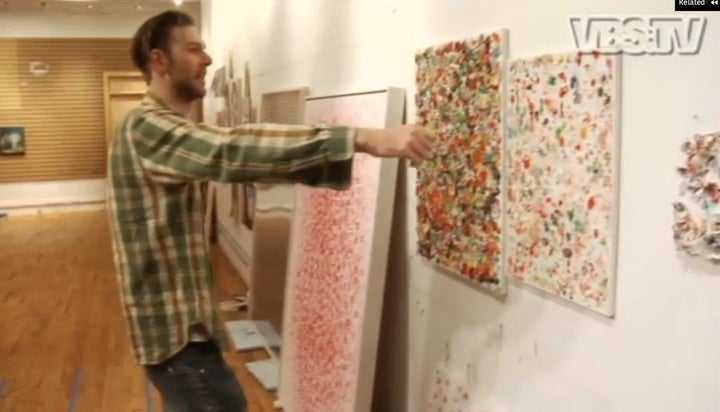
Let's lay out all our ideas about who and what fine artists are: They are by and large unemployed, and their professional training prepares them to be unemployable. As an income category, they are poor, and by temperament they are alienated and resentful of middle-class values. For some things we don't need proof, we just know.
But... a recently released research study of approximately 13,000 graduates of performing and visual arts programs who received their degrees between 1990 and 2009, found that the overwhelming majority of them were employed, predominantly in fields related to their professional training, and that most of them were satisfied with their lives and careers. The study, conducted by the Strategic National Arts Alumni Project, a joint program of Indiana and Vanderbilt universities, was based on completed questionnaires by graduates of more than 150 arts programs at liberal arts colleges, state universities and independent art schools around the country.
Of those 13,000 individuals, 2,817 had undergraduate or graduate degrees from college studio art programs, according to Steven J. Tepper, associate director of the Curb Center for Art, Enterprise and Public Policy at Vanderbilt University who organized the study, and almost 83 percent of them worked the majority of their time in some arts occupation, such as art teaching or in a nonprofit arts organization. "Artists are plucky, resourceful people," he said, "and most of them are doing what their training trained them to do." Sixty percent of these fine artists work more than one job, "but they find what they put together satisfying. It is often said that 'those who can't teach,' but based on this survey we found that many artists do teach and are happy teaching." In addition, more than one third of the survey respondents reported working full-time as professional artists.
One myth may be that artists hate school (rote learning, too confining, artists are misunderstood), but the survey found that visual and performing artists generally had quite positive things to say about the colleges and universities where they received undergraduate and graduate degrees. For instance, 37 percent reported being "somewhat satisfied" and 45 percent were "very satisfied" with the degree of "freedom and encouragement to take risks" at these schools; another 87 percent were either somewhat or very satisfied with their schools' instructors; 75 percent claimed that their school helped them "quite a bit" or "very much" in terms of "thinking creatively," and 73 percent would go to the same school again if they had the option to start over. The only area in which there was an even mix of responses along the spectrum of "very dissatisfied" to "very satisfied" was in career advising.
Still, lacking a strong sense of how to generate a livelihood from their artistic skills did not result in them becoming marginalized or alienated or in any way unable to provide for themselves. According to the survey, under six percent of the fine artists who responded to the survey reported being unemployed. The level of enthusiasm for the salaries they receive is not high, but otherwise artists generally are satisfied with the "opportunity to be creative" (81.6 percent) at their jobs, that their work reflects their "personality, interests, and values" (80 percent) and that they have an "opportunity to contribute to the greater good" (74.2 percent). For those who assume that all or most artists spend their time waiting tables, the survey found that only three percent of the respondents worked in food services (which includes the categories of caterer and chef) the majority of the time.
